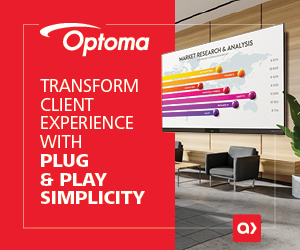by Brian Rhatigan | Mar 10, 2016 | News
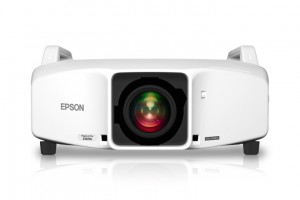 While lampless projectors are not brand new, the technology has evolved and continues to improve as time goes on. Imagine an installation grade projector that can run 24/7 with virtually no maintenance and no lamp changes and carry a three year warranty. Imagine not waiting for your projector to warm up or cool down, where the projector will reach maximum brightness and turn off almost immediately. Combine this with advanced features like projection mapping, edge blending, and an HDBaseT input packaged in a bright enough projector for large venues and you have quite a value proposition for your clients.
While lampless projectors are not brand new, the technology has evolved and continues to improve as time goes on. Imagine an installation grade projector that can run 24/7 with virtually no maintenance and no lamp changes and carry a three year warranty. Imagine not waiting for your projector to warm up or cool down, where the projector will reach maximum brightness and turn off almost immediately. Combine this with advanced features like projection mapping, edge blending, and an HDBaseT input packaged in a bright enough projector for large venues and you have quite a value proposition for your clients.
Laser projectors offer several benefits over traditional lamp based technologies. Let me clarify that laser simply refers to the light source, so the projection technologies like 3LCD are still a major part of these new projectors. Traditional lamp based projectors require the lamp to be replaced roughly every 1500 to 6000 hours depending upon the projector and the mode you run it in, while the average lifespan of a laser based projector is 20,000 hours.
Additionally, with most traditional lamp based projectors it takes a few minutes for the projector to warm up after powering on, and can take up to thirty minutes to provide a stable brightness level and often need to remain plugged in after powering off in order to properly cool the lamp. With laser based projectors they are ready to go almost immediately after being powered on and do not require a connected power source upon powering off with no worry of damaging the projector’s light source.
As far as the light source, projector lamps lose most of their brightness in the first half of their lifecycle whereas with a laser based light source the brightness loss is linear over the 20,000 hour lifecycle. What does this mean? This means that if you compare a laser based projector with a lamp based projector, both with the same light output rating (lumens) that within a very short period of time the laser projector will have the brighter image. Furthermore, even lamp based projectors with higher light output ratings than a laser based projector will quickly provide a lower light output than the laser projector due to the steep curve in degradation of the lamps brightness.
Epson’s popular Pro G and Pro Z installation grade projectors will soon be joined by the new Pro L series of laser based projectors with multiple choices ranging in brightness from 6,000 lumens to 12,000 lumens and multiple lens options with all of the features that users of the Pro G and Pro Z models have grown to love. Expect to start seeing these shipping in June of 2016. I know I can’t wait to get my hands on one.
***
For more information on Epson Projectors contact Brian Rhatigan at [email protected] or 888.420.2566 x6546
by Melody Craigmyle | Mar 1, 2016 | Events, News
I am a proud alumnus of the University of Kentucky and as such, a huge college basketball fan. I followed in the footsteps of the uber fan, Ashley Judd and started as a French major. I quickly decided to double major in marketing because the prospects of finding a job with just a French degree didn’t seem to grow on trees. I certainly wasn’t following Ashley any further than the UK Campus and into Hollywood.

As proof of my loyalty, here I am last year at the National Championship in Indianapolis. For those of you who don’t follow or just don’t remember, Kentucky was undefeated going into the finals and on the threshold of history. Alas, they lost in the first round and now on to a new year of basketball.
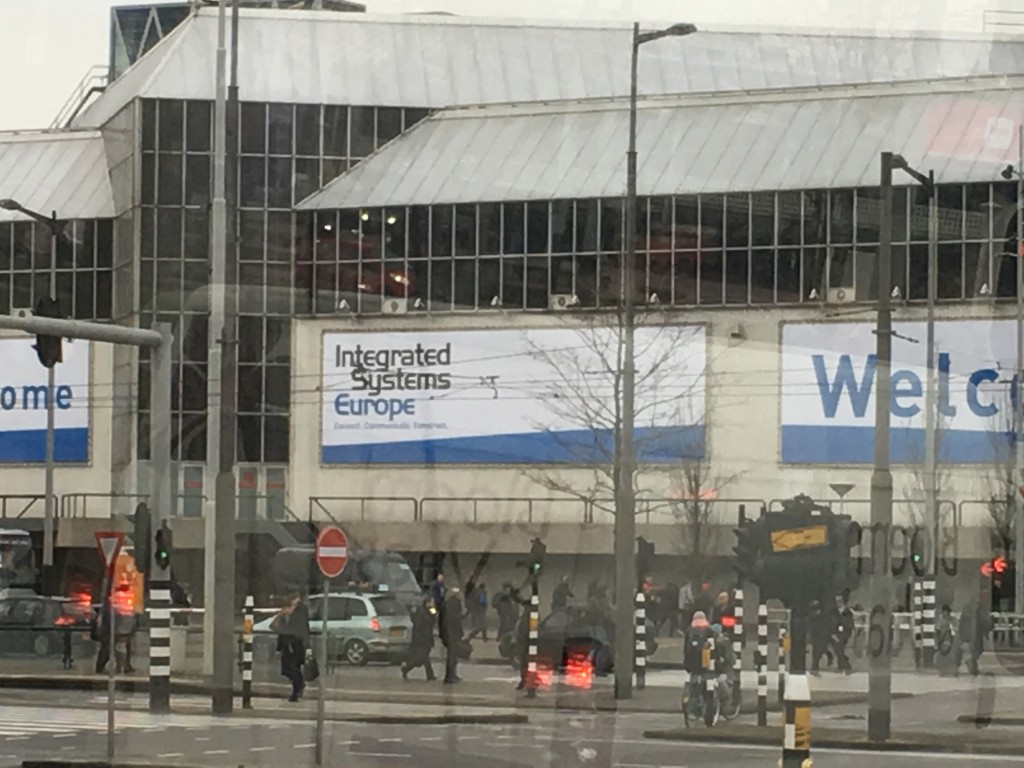
Fast forward to February 2016 and I’m in Amsterdam at the ISE show, the largest Audio Visual show in the world. After taking in the show, my colleague and I decided to sample of the local fare. I asked my friend Sara Abrons from rAVe publications and she commenced with a small history lesson to explain her recommendation.
Indonesia was a Dutch colony back in the day and to brag about their conquest, they wanted to showcase the breadth of spices imported from the colony. This came in the form of an Indonesia “tasting table” which is not Indonesian at all but the result of the peacock feathered bragging meal made palatable for the Dutch and now I’m sure for the tourists like myself.
Presented with about 20 plates and a warming tray, we dove in to a wonderful display. It was a small place with a varied décor – suffice it to say kind of like an Indonesian/Dutch TGI Friday’s with all sorts of pictures, signs and license plates on the walls. I’m looking at these licensed plates and notice some of them are from America when suddenly, I see a familiar face next to the Oliver North for President:
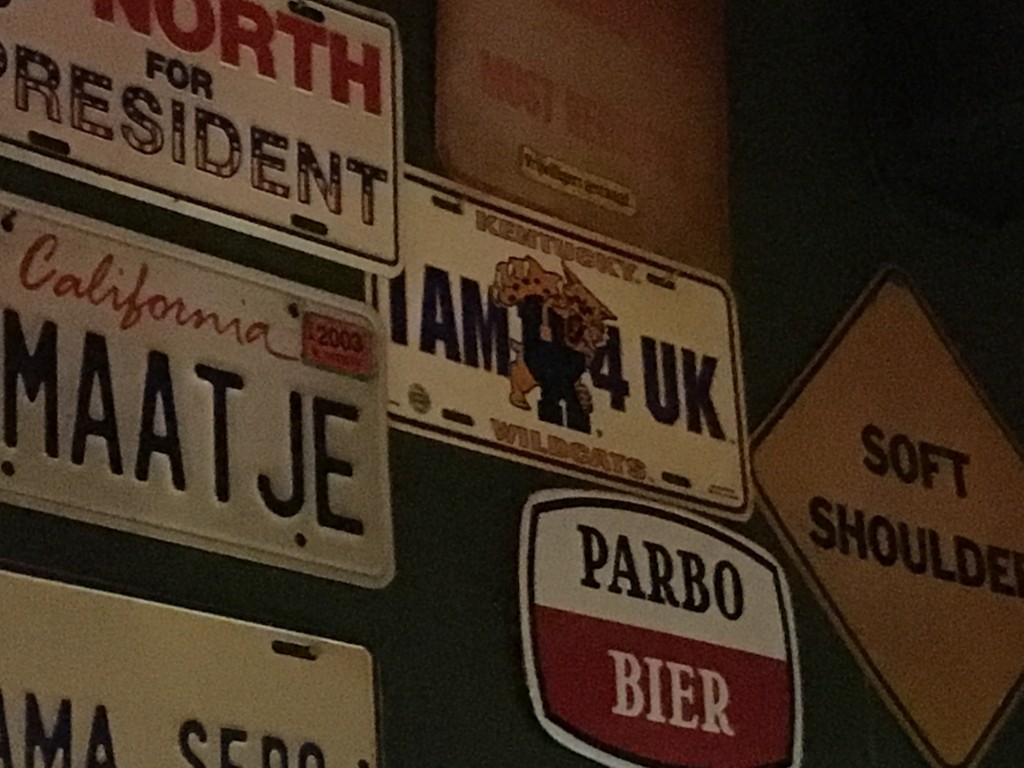
I say to my colleagues, “That’s a UK license plate!” He contends it has to be from the United Kingdom. I remind him that all four years at UK, I worked as a cashier at Kennedy Book Store and rang up THOUSANDS of those plates! Upon further examination, it was confirmed.
Walking back to the hotel (or should I say rolling after 20 courses of Indonesian tasting plate), we are rounding the corner which is adjacent to the MOMO restaurant. By day it’s a sun drenched breakfast nook. By night, it becomes a swanky restaurant/club. Curious, I look through the window at the D.J. Low and behold:
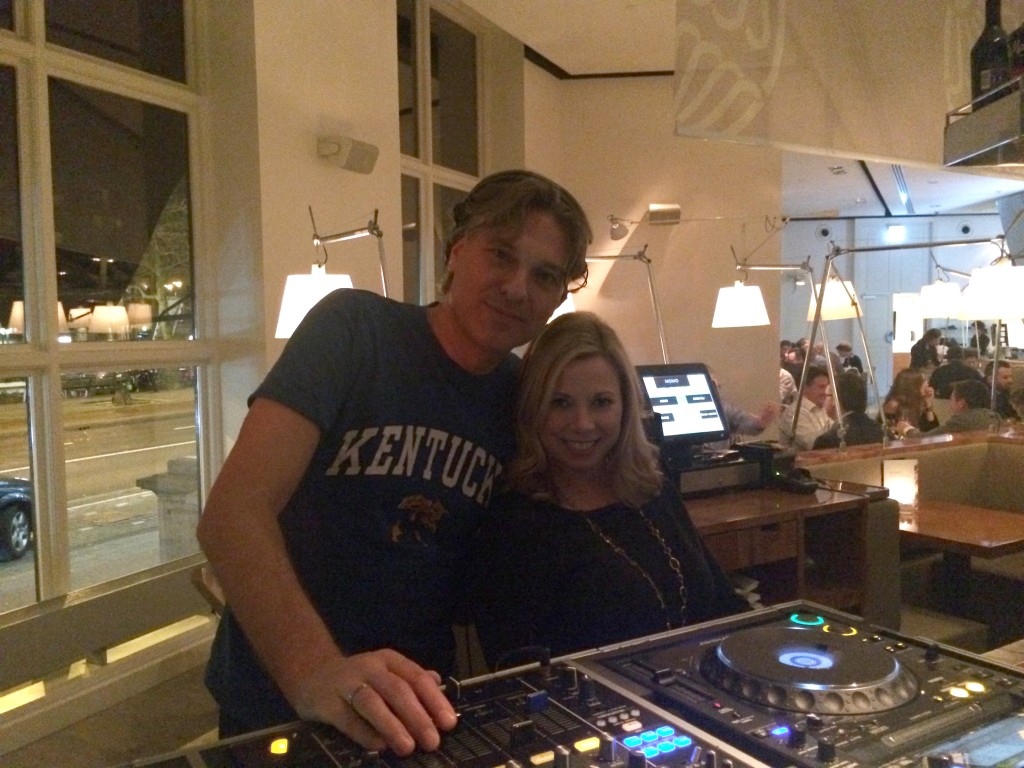
The guy is wearing a Kentucky Wildcats shirt! I tell my colleague that we have to go in and get photographic evidence because no one would believe me. I walk in and the hostess asked me if I had a reservation and I told her, “I’m with the D.J”
They guy was surprised when I ran up to him, complimenting his shirt. He said he got it at a second hand clothing shop in Amsterdam and didn’t even know what it was. He liked the color. I tried to explain it was the greatest college basketball team in the U.S. but I could tell it was no use. It was, in fact, a good color on him. Go Wildcats!
by Melody Craigmyle | Feb 26, 2016 | Digital Signage, News
It’s especially nice when the manufacturers plan their distributor summits in a nice warm location during the dead of February. Such was the case this month with Samsung in beautiful San Antonio, Texas. Distributors, resellers and DMR’s gathered to hear the vision to 2016 and beyond, while seeing some of the latest product developments.
One of the greatest things about these functions is the networking aspect. You’re surrounded by customers, the manufacturer’s folks and even your friendly competitors (and if you are lucky a celebrity or two). The opening reception kicked off this portion of the conference. Here I am rubbing elbows with George Gervin from the San Antonio Spurs (left) and Director, US B2B Distribution for Samsung, Tom Perrier (right):
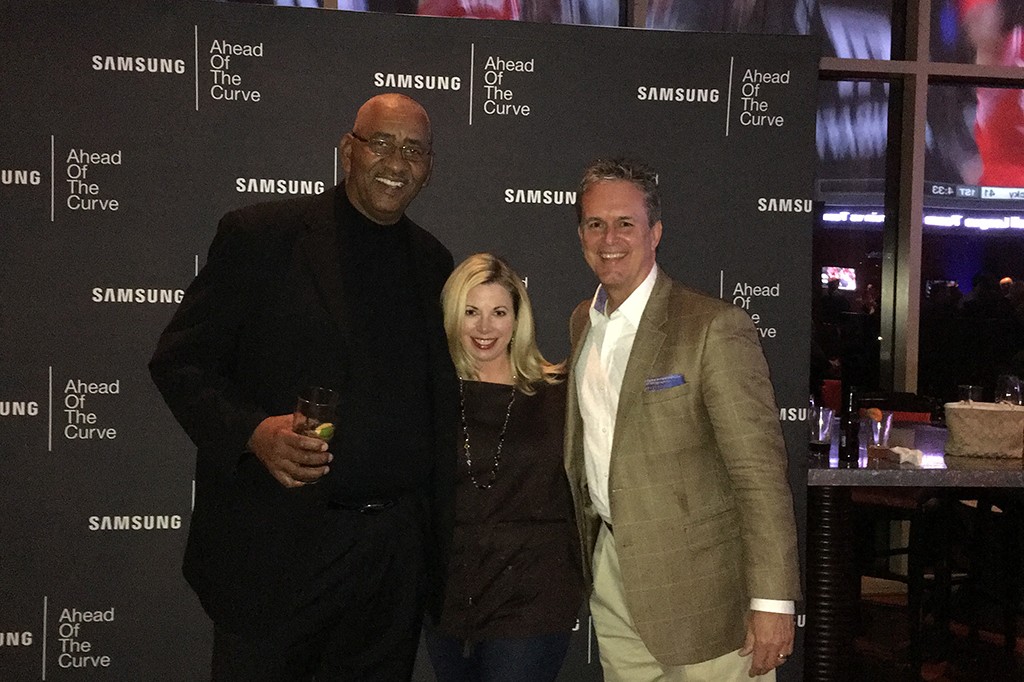
A lot of the conversations revolved around the ever-present dilemma of shrinking and sometimes even razor thin margins on displays in both the Pro and especially consumer markets. I think Samsung has got some new things up their sleeve that may be impactful for their partners as to help with the margin issue. More on that later. Now speaking of razor….
I’ve been on the road a lot lately, and even though I consider myself a season traveler, inevitable I forget something. This time it was a razor so I went down to the JW Marriott gift shop. Filled with cowboy hats, sombreros, ponchos, hot sauces and other Texas sized treats, it was your typical gift shop. I grabbed my usual brand from the stand, went up to the register and the cashier said, “That will be $20.12”. WHAT???!! $20.12 for one disposable razor?
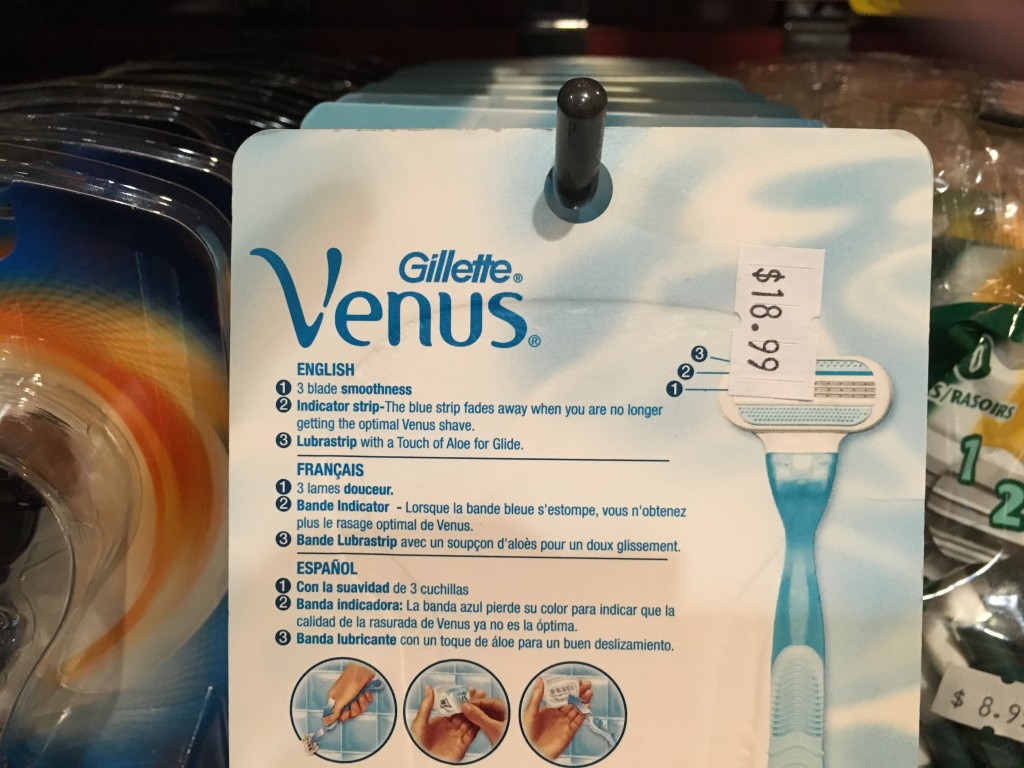
I said no thanks and started to wonder…in this age of fighting declining margins in our industry, how is it that a commodity product like the razor can command 3000% mark up? Location, location, location. Resourcefulness took me to the spa and they ponied up a razor at no charge.
On to the Samsung Product Showcase – in usually Samsung fashion they never disappoint when it comes to new product development. It was good to see some of the concept things coming to fruition such as:
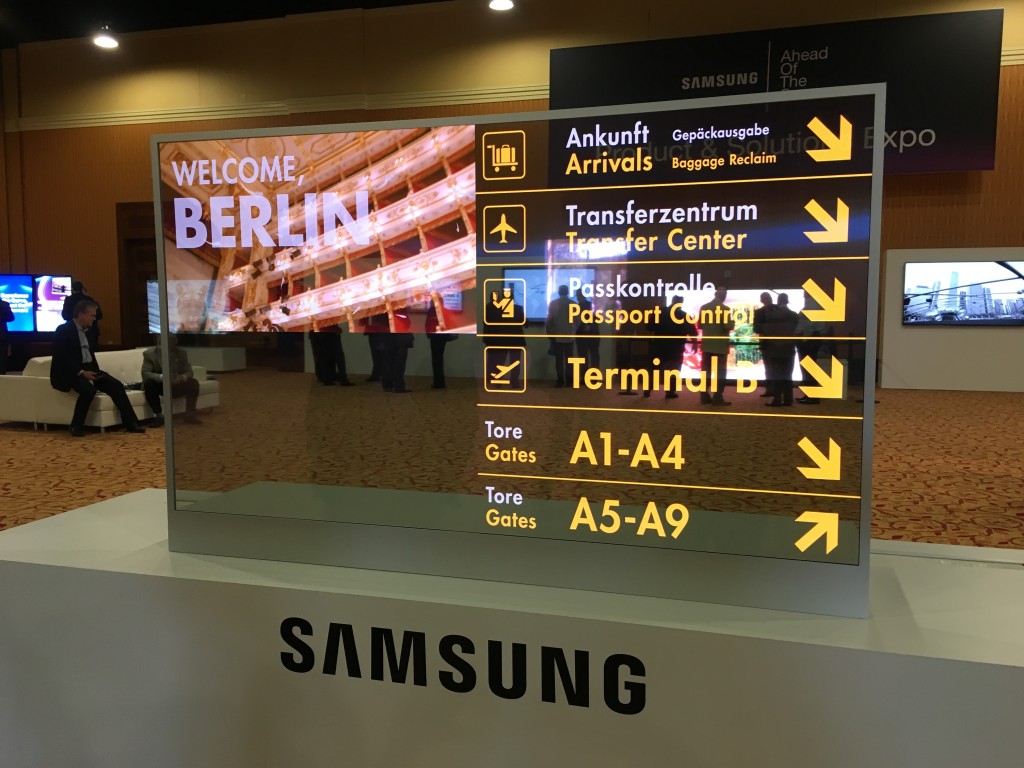
The transparent display which holds a multitude of applications such as retail and anywhere the end user just basically wants to be uber swank.
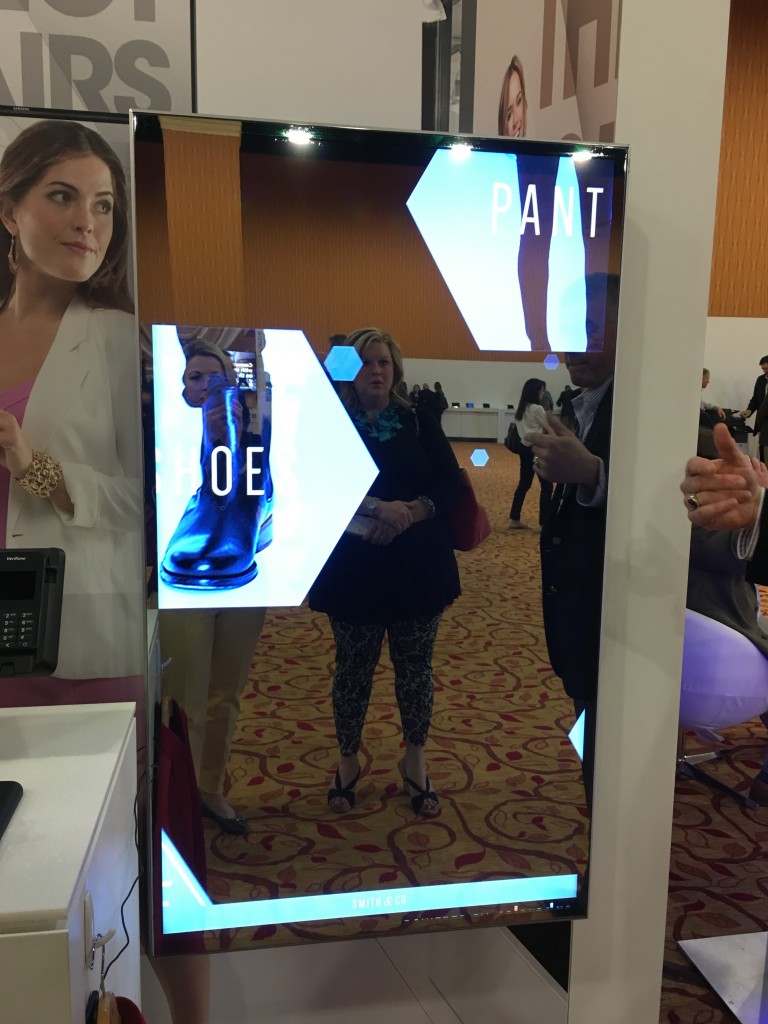
The mirror display which they showed in a retail setting with RF technology in clothing and shoes that dynamically changed when the user took them to the mirror. Here is our Business Development Manager extraordinaire, Apryl Lamberti taking it for a spin.
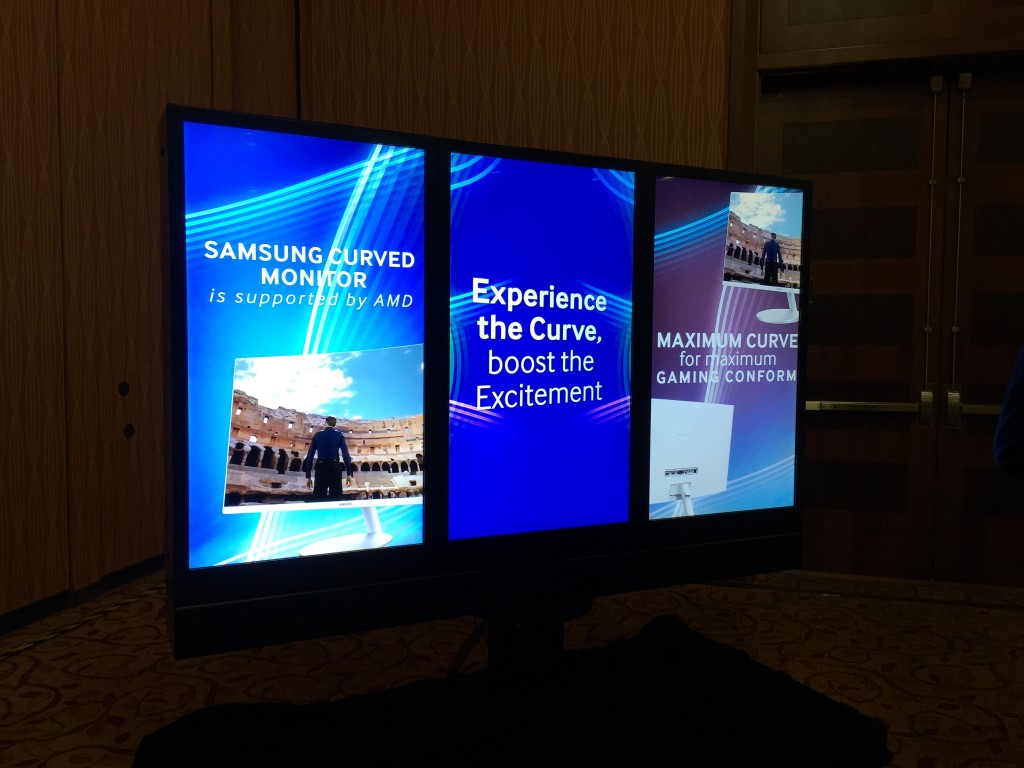
Outdoor displays – not just ruggedized, coated and cased back- lit LED panels but..
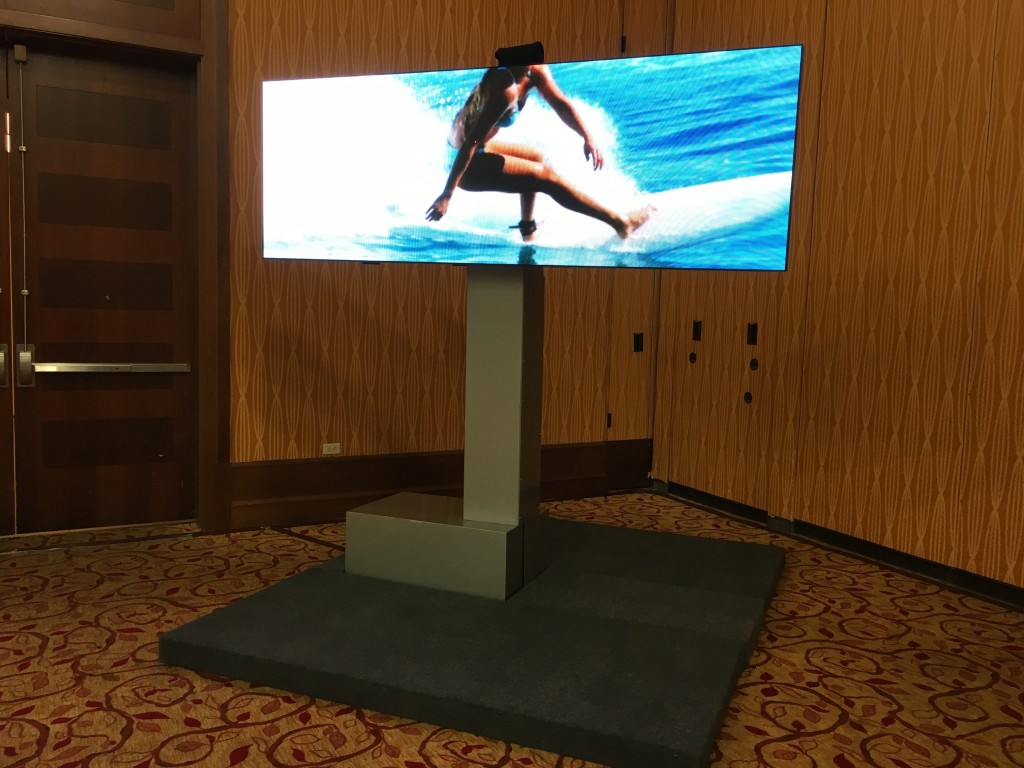
Surfs’up! Samsung’s YESCO acquisition last year brings the new outdoor LED.
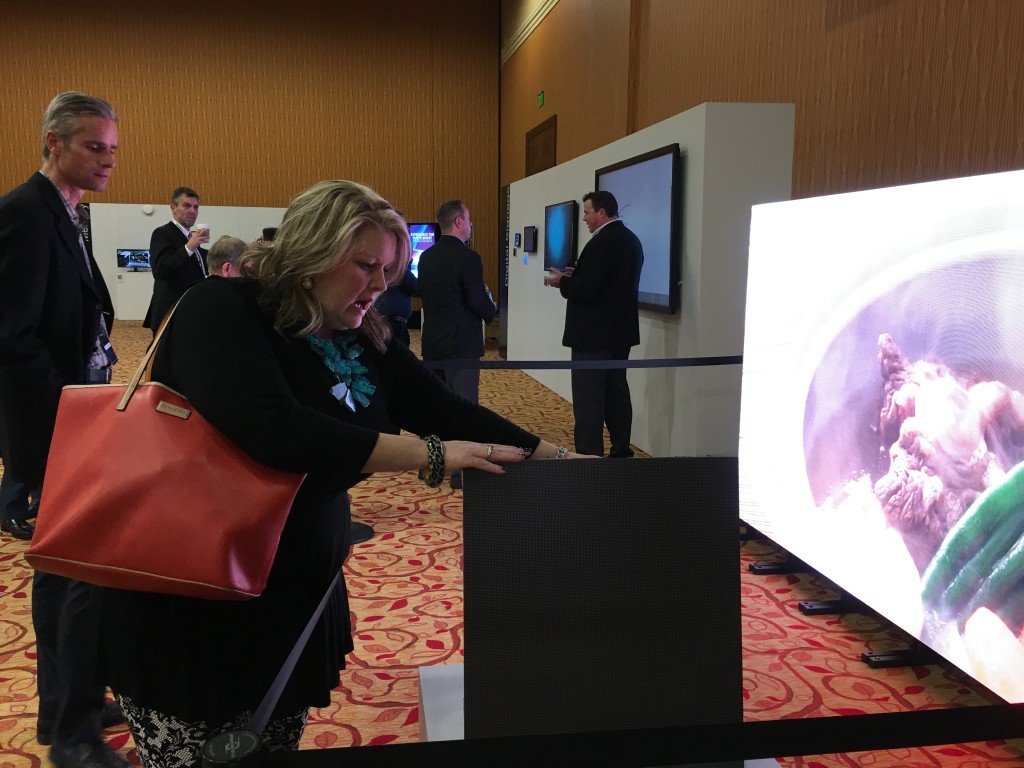
Finally the indoor LED was quite a hit. Here is Apryl examining the type of panel used to make the video wall in the background.
I think the future looks bright with the new LED products (no pun intended). What Samsung was showing are solutions that require an ecosystem of services, which is where the margin lies and value to our partners. The opportunity for services such as content creation, can create that long-term relationship with a customer, long past the sale of the display.
by Sam Taylor | Feb 25, 2016 | Digital Signage, Education, News
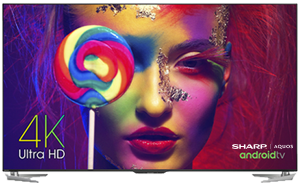
The use of 4K Ultra High Definition has skyrocketed since its commercial introduction in 2010. Professional installs of all kinds – digital signage, hospitality, corporate, education, command and control – can be dramatically enhanced due to the stunning beauty and astounding resolutions made possible with this display technology.
The worldwide 4K display market is expected to reach $52 billion by 2020 according to industry researchers. And while commercial displays are still the top use for 4K, the technology has even started to appear in the entire range of display devices we commonly use, including PC monitors, notebooks, tablets and even smartphone screens.
Here are some common questions we get asked about moving to 4K:
What makes 4K UHD such a critical display tool for commercial integrators?
A 4K UHD display has four times the number of pixels (3840 x 2160) compared to full HD (1080p) resolution. The major advantage of using 4K displays is that you can ultimately deliver a very immersive and rich experience that is in close proximity to the display without sacrificing image quality. UHD provides the ability to display finer details, amazing depth of colors and more information on a screen. As the technology matures and costs are driven down, we will see 4K screens become the norm and 1080 slowly drift away due to lack of production.
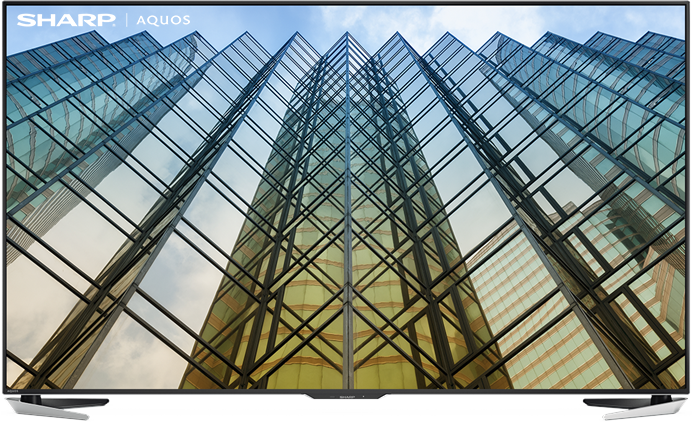
Why purchase a 4K display through Almo Pro A/V?
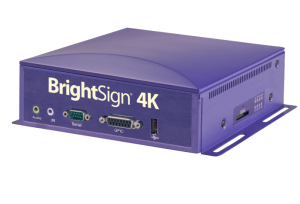 Almo offers a range of 4K displays, including exclusive accessibility to the Sharp AQUOS® 70-inch display, which features the Revelation Upscaler to display all content at near-4K quality for an amazing picture all the time, no matter which source is being used. Almo also offers a host of powerful media players with high storage capability from manufacturers like BrightSign to drive the data and produce the best results based on the content that is being shown.
Almo offers a range of 4K displays, including exclusive accessibility to the Sharp AQUOS® 70-inch display, which features the Revelation Upscaler to display all content at near-4K quality for an amazing picture all the time, no matter which source is being used. Almo also offers a host of powerful media players with high storage capability from manufacturers like BrightSign to drive the data and produce the best results based on the content that is being shown.
So, what about content?
Obtaining 4K content has been the biggest 4K barrier to date, however, as the technology increases in popularity, more content is becoming available and the cost to create that content is decreasing. With Almo’s Content Creation Services, integrators have the opportunity to offer 4K standard and customized still images or full motion video content as part of an initial installation and ongoing maintenance package. This creates recurring revenue, builds margins and lengthens customer relationships.
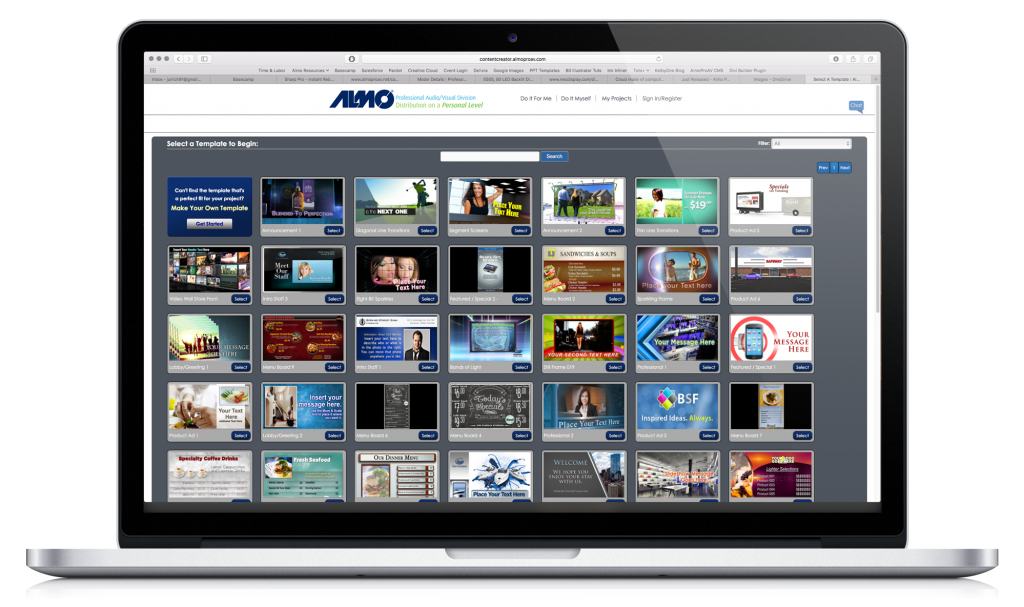
What if I need support to help select and integrate the 4K displays?
Almo has a highly specialized fleet of Business Development Managers that offer technical knowledge, system design assistance and in-depth brand knowledge about 4K displays to help you integrate the technology into your commercial installs. No other distributor in the AV industry provides this level of expertise to its partner community.
by Darren Altman | Feb 9, 2016 | Digital Signage, News
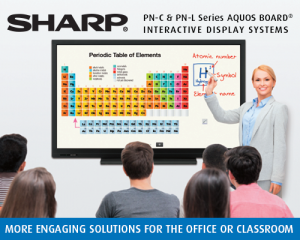 Sharp’s Professional division has been the industry leader in touch monitors 60 inches and above with the AQUOS BOARD®. To remain as the industry leader Sharp has had to modify these panels over the years. Some of these changes have included the addition of multi touch, anti-glare features, simultaneous annotation, and improved hand handwriting recognition, making it a collaborative solution with its touch display link software that comes free with the purchase of any AQUOS BOARD®. Sharp offers the AQUOS BOARDS® in 60”, 70” and 80” sizes, and most recently Sharp has introduced 2 more AQUOS BOARDS® to their current lineup, the PN-C603D and PN-C703B. These new versions of the AQUOS BOARD® are really aimed for the education market, specifically K-12.
Sharp’s Professional division has been the industry leader in touch monitors 60 inches and above with the AQUOS BOARD®. To remain as the industry leader Sharp has had to modify these panels over the years. Some of these changes have included the addition of multi touch, anti-glare features, simultaneous annotation, and improved hand handwriting recognition, making it a collaborative solution with its touch display link software that comes free with the purchase of any AQUOS BOARD®. Sharp offers the AQUOS BOARDS® in 60”, 70” and 80” sizes, and most recently Sharp has introduced 2 more AQUOS BOARDS® to their current lineup, the PN-C603D and PN-C703B. These new versions of the AQUOS BOARD® are really aimed for the education market, specifically K-12.
The value series PN-C603D and PN-C703B don’t sacrifice features and are similar to the PN-L line up of AQUOS BOARDS® with the exception of a few differences. The PN-C603D and PN-C703B are still multi touch but only 6 points of touch versus the 10 points of touch in the PN-L series. The other differences between the PN-C and PN-L series are 2 can simultaneously annotate versus 4 people and the PN-C series are rated 16/7 rather than the more robust PN-L series which is rated at 24/7. Even though the PN-C series gives up these few features for it’s economical cost, it still comes with a 3 year warranty, sharps pen software, touch display link software – and best of all – it is still built on the same open platform as the PN-L series allowing it be versatile and agnostic to most software on the market. Even though the education vertical is the primary focus for these new AQUOS BOARDS® it can be used in any application such as way finding, collaborative conference rooms or huddle areas, interactive signage in places such as museums and hospitals.
Stay tuned to more exciting products from Sharp Professional on future blogs. For versatility and performance in business office meetings, education and high-impact signage, there’s never been a better time to think Sharp. For more information on Sharp Professional or to schedule a demo, contact Darren Altman at [email protected] or 888.420.2566 x6541.
by Melody Craigmyle | Jan 26, 2016 | Digital Signage, Education, News, Uncategorized
First, if you haven’t heard of the term “techorating”, it’s not something I made up. I thought I had but after I asked my dear friends Alan and Jonathan Brawn to write a course for our E4 AV Tour on this trend I was calling techorating, they discovered it was not an original. Techorating was a catchy term coined back in 2008 by interior designer, Doug Wilson from the TLC TV show Trading Spaces, as a concept for the emergence of integrating home technology and home decor in balance with one another. Since the Brawn’s taught this course for us a few years ago, the term caught on it the AV industry and has been written about in nearly every major AV publication, including a recent article in Digital Signage Today.com. I’ve seen a lot of great examples of techorating, especially in Las Vegas where designers and architects continue to push the limits to wow audiences, attract visitors and keep us coming back for more shows, casinos, long cab lines and the ever-present linger of 2nd hand smoke. Which is why my visit to Comcast last week was filled with techorating awesomeness! It was an experience like no other, elegantly done with a playful yet bold approach – and 100% smoke free. 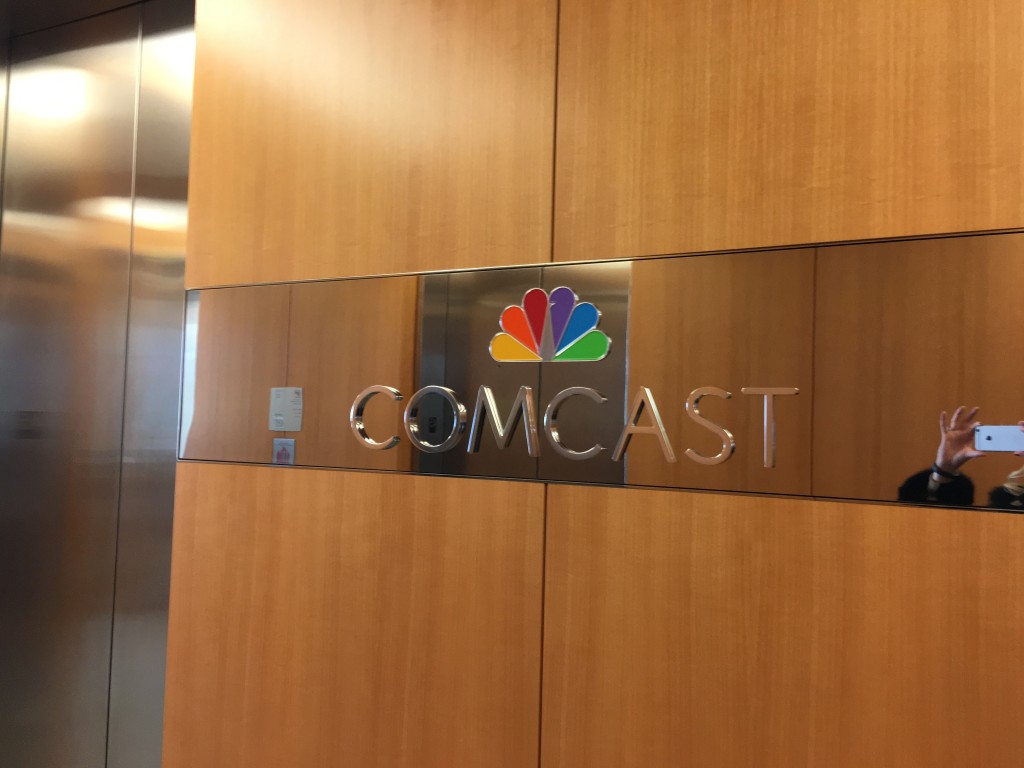 You enter the lobby on JFK Boulevard in downtown Philadelphia, which is the tallest building in the city, and at first it looks like any other normal lobby:
You enter the lobby on JFK Boulevard in downtown Philadelphia, which is the tallest building in the city, and at first it looks like any other normal lobby: 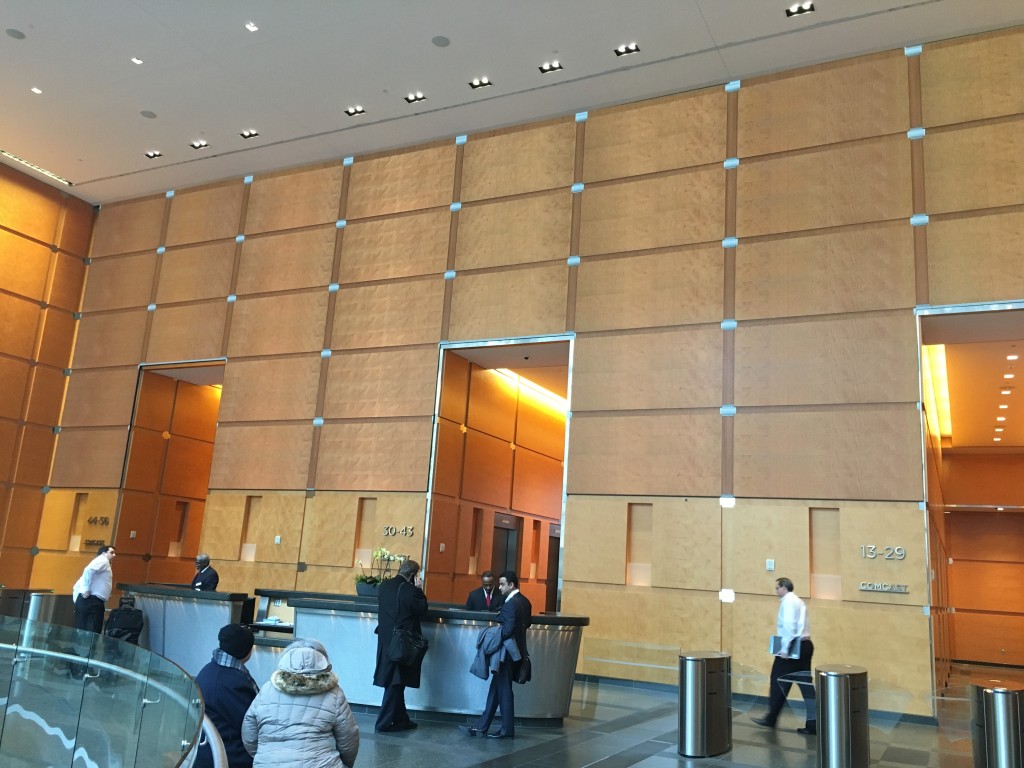 Nice ashy oak walls, silver accents, very clean and polished look. But wait, something starts to happen and…
Nice ashy oak walls, silver accents, very clean and polished look. But wait, something starts to happen and… 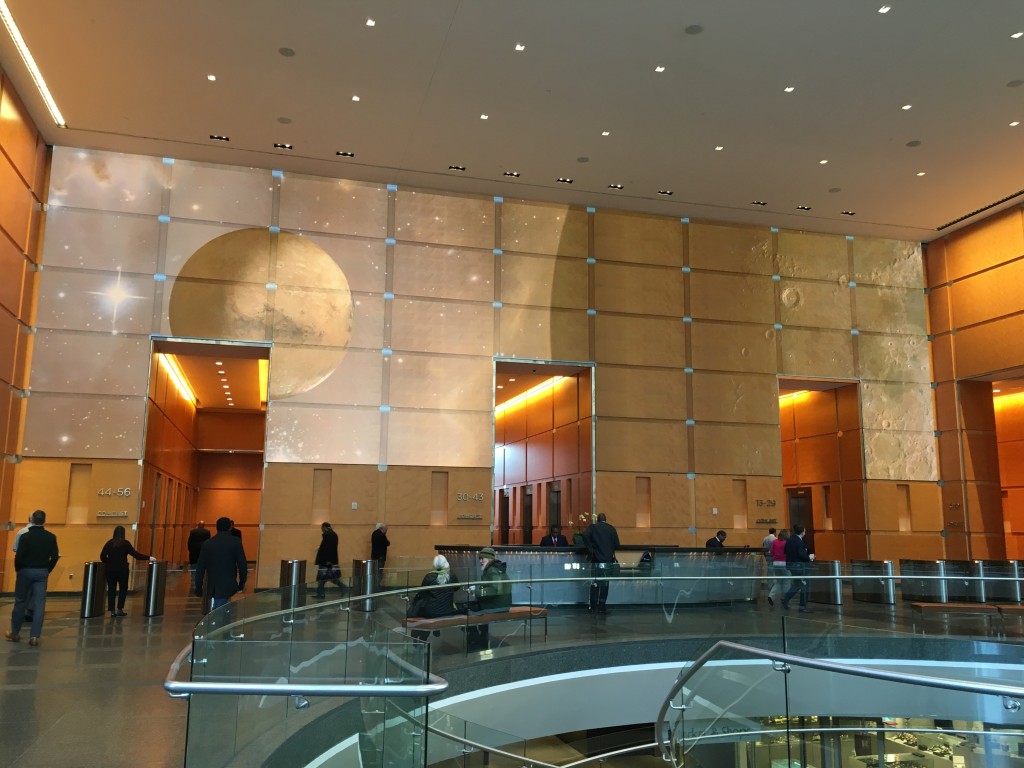 It’s not just a wall! It’s an intergalactic force to be reckoned with. No wait, it’s a water wall!
It’s not just a wall! It’s an intergalactic force to be reckoned with. No wait, it’s a water wall! 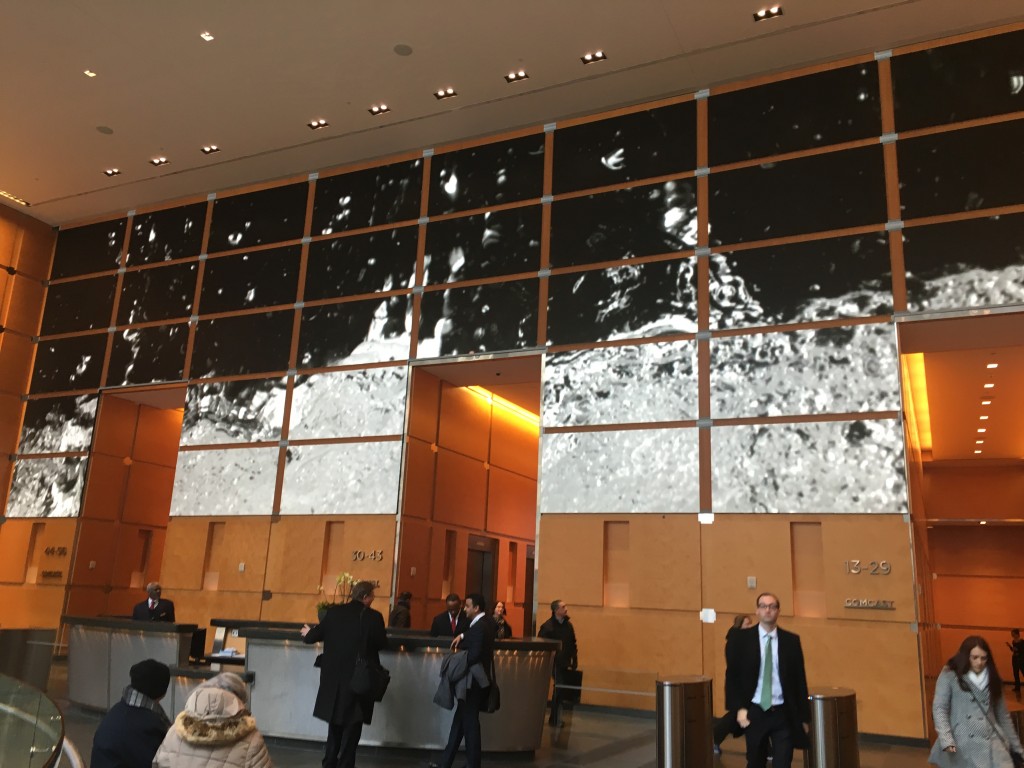 Cool stuff, right? It’s the attention to detail as well that struck me. Much of the content intertwines with the wall architecture, creating virtual joints in the places where the LED panels “join” – you can see from this shot that part of the image is a real joint and the other is silver colored pixels.
Cool stuff, right? It’s the attention to detail as well that struck me. Much of the content intertwines with the wall architecture, creating virtual joints in the places where the LED panels “join” – you can see from this shot that part of the image is a real joint and the other is silver colored pixels. 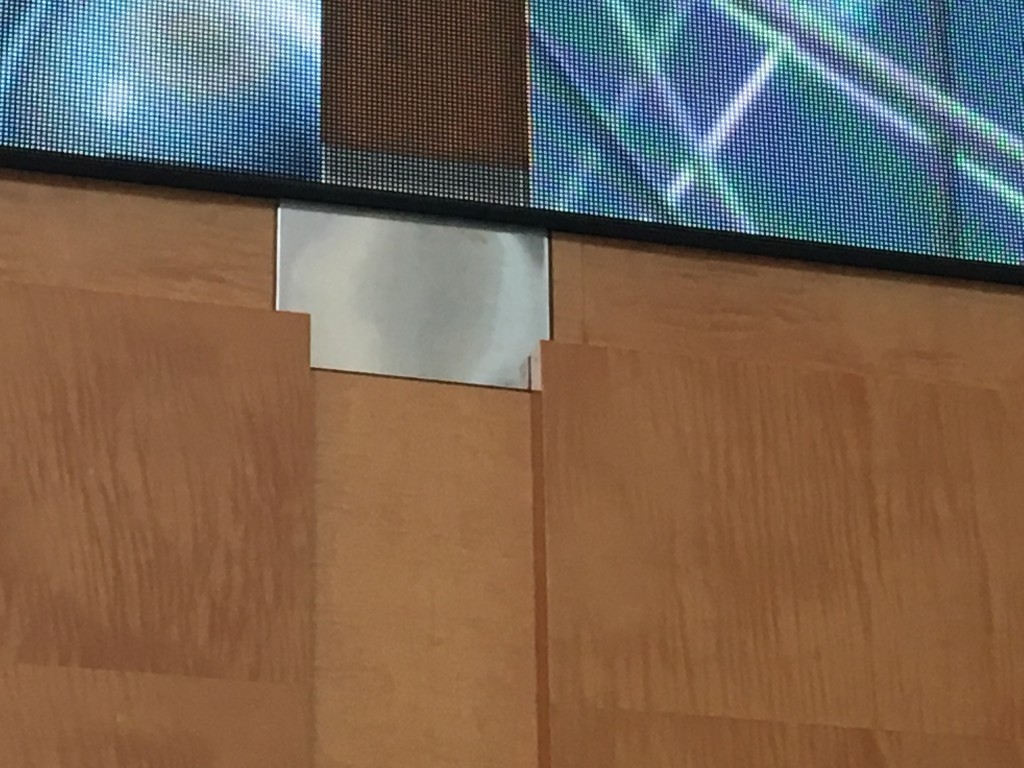 You may be wondering what I was doing lingering in the Comcast lobby. I was there on official business but I can tell you that this is one of the most visited tourist destinations in Philadelphia, so it’s not uncommon to see all sorts of people in their lobby. We launched our new Almo Connect service for our resellers to offer bandwidth, cable TV and voice services to their customers and Comcast is one of our partners (along with many other top cable providers). Why would our partners offer bandwidth services? Think about if you’re doing a digital signage deployment and you plan on refreshing high resolution content on a daily or weekly basis. You need LOTS of bandwidth! And for future proofing, think about 4K – now you’re talking BIG data coming across a network. And of course the IT people are like, “no way, not on my network!” And you’re like, “no big deal, we offer high speed internet and we can take care of everything.” Voila – the reseller makes monthly reoccurring revenue on that sale – that’s right – every single month. But back to the techorating – here’s a very cool video so you can see how they use different parts of the wall for entertainment, like this “cubical” video:
You may be wondering what I was doing lingering in the Comcast lobby. I was there on official business but I can tell you that this is one of the most visited tourist destinations in Philadelphia, so it’s not uncommon to see all sorts of people in their lobby. We launched our new Almo Connect service for our resellers to offer bandwidth, cable TV and voice services to their customers and Comcast is one of our partners (along with many other top cable providers). Why would our partners offer bandwidth services? Think about if you’re doing a digital signage deployment and you plan on refreshing high resolution content on a daily or weekly basis. You need LOTS of bandwidth! And for future proofing, think about 4K – now you’re talking BIG data coming across a network. And of course the IT people are like, “no way, not on my network!” And you’re like, “no big deal, we offer high speed internet and we can take care of everything.” Voila – the reseller makes monthly reoccurring revenue on that sale – that’s right – every single month. But back to the techorating – here’s a very cool video so you can see how they use different parts of the wall for entertainment, like this “cubical” video:
Kudos to the designers and especially to the content creators. The convergence of architecture, decorating, digital display, graphic arts done spectacularly well and I didn’t even have to walk through a casino to see it.
 While lampless projectors are not brand new, the technology has evolved and continues to improve as time goes on. Imagine an installation grade projector that can run 24/7 with virtually no maintenance and no lamp changes and carry a three year warranty. Imagine not waiting for your projector to warm up or cool down, where the projector will reach maximum brightness and turn off almost immediately. Combine this with advanced features like projection mapping, edge blending, and an HDBaseT input packaged in a bright enough projector for large venues and you have quite a value proposition for your clients.
While lampless projectors are not brand new, the technology has evolved and continues to improve as time goes on. Imagine an installation grade projector that can run 24/7 with virtually no maintenance and no lamp changes and carry a three year warranty. Imagine not waiting for your projector to warm up or cool down, where the projector will reach maximum brightness and turn off almost immediately. Combine this with advanced features like projection mapping, edge blending, and an HDBaseT input packaged in a bright enough projector for large venues and you have quite a value proposition for your clients.





















